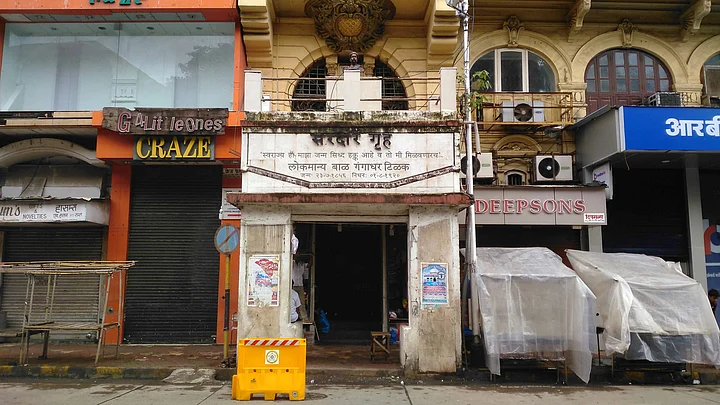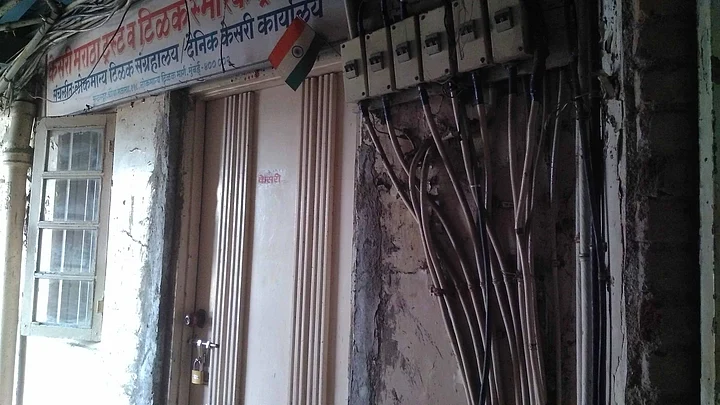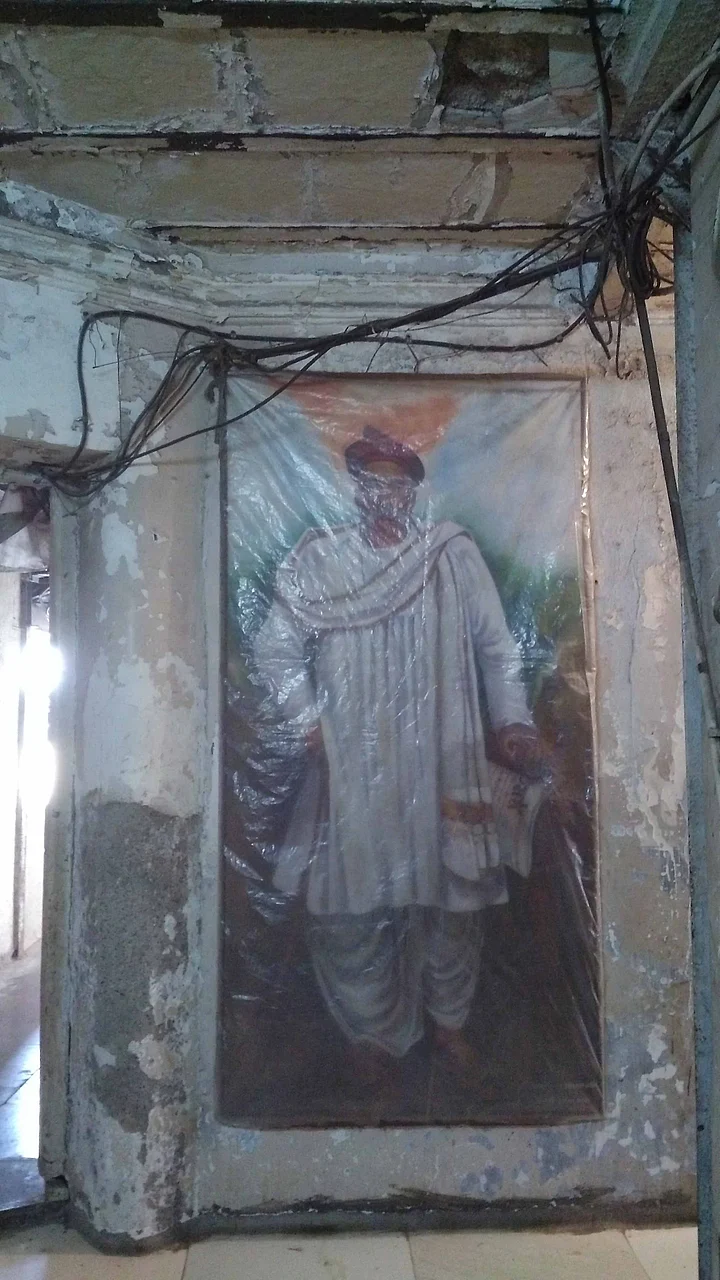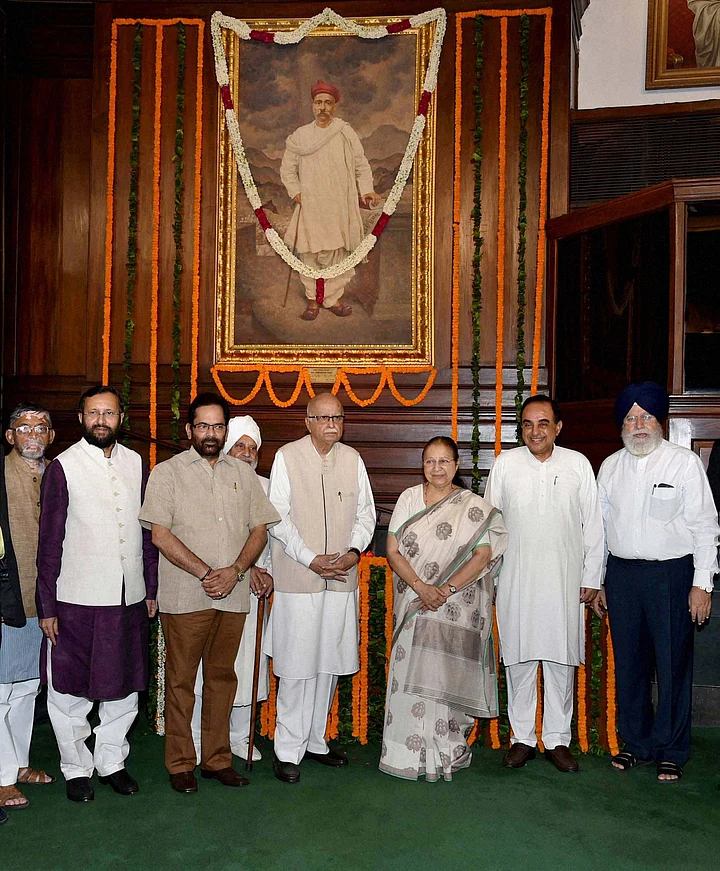(This article has been republished from The Quint’s archives to mark Bal Gangadhar Tilak’s death anniversary, on 1 August. It was originally published on 1 August 2016. The year 2016 marked the centenary of two landmarks in the history of India’s freedom movement – Tilak’s electrifying slogan “Swaraj is my birthright, and I shall have it” and the Tilak-Jinnah Pact in Lucknow.)
Lokmanya Tilak was the tallest leader of India’s freedom struggle before Mahatma Gandhi took the mantle from him in 1920. Gandhiji himself, in his obituary to Lokmanya after the latter’s death on the 1st August of that year, wrote: “No man of our times had the hold on the masses that Tilak had.”
Pandit Jawaharlal Nehru penned in his An Autobiography: “The greatest Indian of the day… indomitable Tilak, who would not bend though he break.” Edwin Samuel Montagu, British Secretary of State for India between 1917 and 1922, had this to say: “Tilak is at the moment probably the most powerful man in India.”
Sir Ignatius Valentine Chirol, a British journalist who passionately defended the British empire, scornfully called him the ‘Father of Indian Unrest’.
The British feared him so much that they slapped a sedition case against Tilak in 1908 and banished him to six years of rigorous imprisonment in distant Mandalay (present-day Myanmar). In protest, the textile mill workers of Bombay went on a six-day strike – it was the first political strike in the history of India’s labour movement.
Tilak, one of the greatest scholars of Sanskrit and the Vedas in his time, used the time of his incarceration to write a magnum opus ‘Gita Rahasya’ (Secrets of the Bhagwad Gita). He affirmed in the book that doing ceaseless karma (devotional activity) in service of humanity is the highest and truest form of worship of God.
Why, then, has India forgotten its hero, who was once hailed as ‘Lokmanya’ (which means, a leader respected by the people)? Why is his heritage lying in such a shocking state of neglect? Tilak’s statue near the Supreme Court in the national capital is a desolate place, hardly attracting any attention of the busy traffic flowing from Tilak Marg to Bahadur Shah Zafar Marg and ITO.

His statue is missing at the Maharashtra Sadan, the opulent and scandal-scarred state government guest house in New Delhi, where only Shivaji, Jyotiba Phule and Dr Babasaheb Ambedkar have sculptural presence. The condition of Sardar Gruh in Mumbai, where the Lokmanya lived and also breathed his last on 1 August 1920, is pathetic.
That it is located right across the office of Mumbai’s police commissioner makes one wonder if the Government of Maharashtra is deliberately blind to the existence of Sardar Gruh.
This conclusion will be further reinforced if you visit the house in Ratnagiri where he was born on 23 July 1856. It is where he spent the first ten years of his life. His janmasthan has been converted into a national museum, but it hardly looks like one.
There is not even a small bookshop selling his books, books about him, or memorabilia of the kind you find in good museums around the world.
I visited the Tilak Museum in Pune. It is located in Kesari Wada, where Lokmanya ran two newspapers – Kesari in Marathi and Mahratta in English – that enraged the colonial rulers no end. I was hoping to see a befitting memorialisation of the great leader in what was after all his karma bhoomi. I was deeply disappointed.
I couldn’t help compare it with the many excellent memorials dedicated to national leaders in the West, and also in Russia and China, that I have visited and then tell myself in despair that we Indians neither know museology nor really care for the personalities we claim to show our respect for.
The museum in Pune is in a very poor shape. Worse still, neither the central government nor the state government gives a single rupee in financial aid to the museum, and it is being run entirely by the descendants of Tilak’s family.
And we have done this to the man who gave Indians the immortal slogan “Swaraj is my birthright, and I shall have it!” Indeed, the year 2016 marks a hundred years of this slogan, which electrified an entire generation of patriots fighting for India’s freedom.

Was Tilak Anti-Muslim? No!
Falsification of history is not the monopoly of communist dictatorships in China and the erstwhile Soviet Union. It is creeping in small ways into India too. Two accusations against Tilak have been popularised by leftist and Ambedkarite scholars.
The first criticism is that he was “anti-Muslim” and a “Hindu nationalist”. The second is that he was a “Brahminical opponent” of social reform. Both are false.
In support of the first criticism, it is cited that Tilak introduced “Hindu revivalism” into the national movement by bringing the Ganesh and Shivaji Jayanti festivals into the public sphere in Maharashtra. What his critics conveniently ignore is that he also participated in Moharram processions with his Muslim compatriots in Pune, just as many Muslims took part in Ganesh and Shivaji festivities.
Tilak’s belief that Indian nationalism is “composite” – meaning that it has equal place for Hindus and Muslims – is anathema to the proponents of India as a ‘Hindu Rashtra’ and Pakistan as an ‘Islamic Nation’.
It is true that in his earlier writings, Tilak minced no words in flaying the fanaticism of Muslim invaders and their acts of bigotry against their Hindu subjects. But it is also true that Tilak’s views on Indian Muslims changed in the course of the freedom struggle, and he became convinced that reconciliation and unity between the two communities was absolutely necessary for India’s liberation and future progress.
Tilak wrote in the Kesari: “When Hindus and Muslims jointly ask for Swarajya from a common platform, the British bureaucracy has to realise that its days are numbered.”
Delivering a lecture in Satara on ‘Swaraj’ on 17 October 1917, Tilak said, “Attempts are being made to create dissensions among us, perhaps at the instigation of the government…These persons allege that Swaraj sought for would mean the concentration of power in the hands of the Brahmins or the Muhammadans who would tyrannise other communities of the society.
Such arguments create misapprehensions in the minds of the people. I consider it unfortunate. This is no time for dissensions or disunion.”

The allegation that ‘Swaraj’ would lead to establishment of ‘Brahmin Raj’ came from the anti-Brahmin movement in Maharashtra. The other allegation that ‘Swaraj’ would lead to ‘Muslim Raj’ came, ironically, from ultra-Hindu nationalists who had opposed the Tilak-Jinnah Pact in Lucknow in 1916.
If we look back at India’s freedom movement, we see two milestones when Hindu-Muslim cooperation reached its zenith. One was the 1857 War of Independence, when Hindus and Muslims fought shoulder-to-shoulder against “Company Rule” – the colonial advancements of the East India Company.
The other was the Lucknow Pact between the Congress and the Muslim League in December 1916, the principal architects of which were Tilak and Mohammed Ali Jinnah.
Remarkably, Jinnah those days was a member, simultaneously, of both the Congress and the Muslim League. He was held in high esteem in both parties, and was popularly known as an ‘Ambassador of Hindu-Muslim Unity’.
Tilak and Jinnah had worked together in the previous decade. Hence, a confluence of India’s two main political streams led to the historic Lucknow Pact in 1916. AG Noorani, a prolific scholar, has described this convincingly in his book Jinnah and Tilak – Comrades in the Freedom Struggle.
More by design than by coincidence, the annual sessions of the Congress and the Muslim League took place around the same time, in the last week of December 1916, in Lucknow. The highlight of the Lucknow Pact was that the Congress and the Muslim League agreed on separate representation to Muslims and gave due weightage to their representation, higher than their percentage in population would warrant, in the Imperial/Provincial Legislatures where they were in a minority.
At the same time, applying the same principle, it increased the representation of non-Muslims and suitably reduced the representation in Muslims in the Muslim-majority provinces like Punjab and Bengal. As a result, the Pact conceded to the Muslims one-third of the seats in the Imperial Legislative Council.
The idea of separate electorates sounds odd, even repugnant, in today’s India. So does the seemingly undemocratic concept of over-representation to a religious community (to Muslims in Hindu-majority provinces and to Hindus in Muslim-majority provinces). However, we have to view this agreement from the point of view the conditions prevailing in India in the second decade of the last century.
The Indian Councils Act 1909, also known as the Morley-Minto Reforms, had conceded the Muslim demand for separate electorates in its highly restricted devolution of power to Indians. This was opposed by the Congress, which was in favour of joint electorates.

At the same time, there was a realisation in large sections of both the Congress and the Muslim League that a united front of Hindus and Muslims was necessary to move towards meaningful self-governance. Tilak best represented this new thinking in the Congress and spoke effectively in favour of the party’s session in Lucknow endorsing separate electorates for Muslims and other provisions in the Pact.
Influential leaders like Pandit Madan Mohan Malaviya, BS Moonje and TB Sapru opposed him, saying he had surrendered to the Muslims by conceding the ‘anti-national and anti-democratic’ system of separate electorates. Yet, he stood his ground in Lucknow and staked his all for the Hindu-Muslim settlement.
Addressing over 2,000 delegates in the open session, and using words that only a leader with enormous conviction and self-confidence can, Tilak said: “It has been said that we, Hindus, have yielded too much. The concession that has been made to our Muhammadan brethren in the Legislative Council is really nothing too much. In proportion to the concession that had been made to the Moslems their enthusiasm and warm-hearted support is surely greater. I urge the audience to give effect actively to the resolution adopted by the Congress.”
Explicating his stand further in his address at the concurrent session of the Home Rule League in Lucknow. Tilak remarked:
There is a feeling among the Hindus that too much has been given to the Muslims. As a Hindu I have no objection to making this concession.We cannot rise from our present intolerable condition without the aid of the Muslims. So in order to gain the desired end there is no objection to giving a percentage, a greater percentage, to the Muslims. Their responsibility becomes greater, the greater the percentage of representation you give to them.They will be doubly bound to work for you and with you, with a zeal and enthusiasm greater than ever. The fight is at present a triangular one.
Tilak’s stand was that the “triangular” fight among Hindus, Muslims and the British should be reduced to a “two-way” fight between the British and the common front of Hindus and Muslims. And for bringing about this fundamental change, he was prepared to show that Hindus were willing to be magnanimous towards their Muslim brethren, who, after all, were fellow Indians.
What was important was for the Hindus and Muslims to sink their differences in the united struggle for Swaraj. Jinnah echoed Tilak’s thoughts and sentiments: “My message to the Mussalmans is to join hands with your Hindu brethren. My message to Hindus is to lift your backward brother up.”
Had this Hindu-Muslim unity forged by Tilak and Jinnah survived, India’s subsequent history would have been very different. It is my firm conviction that the spirit of compromise and mutual accommodation displayed by the Congress and the Muslim League in the Lucknow Pact is still relevant.
The Kashmir issue can be easily resolved, and India-Pakistan normalisation achieved, if the governments of our two countries show the same spirit of compromise and mutual accommodation to pursue a loftier goal.
Was Tilak Anti-Dalit? No!
Let me briefly address the second criticism. Did Tilak support untouchability? Was he a casteist leader? It is true that some of Tilak’s early writings on caste were highly conservative and hence problematic. However, as an intellectual and as a political leader, Tilak evolved with the times. His words speak for themselves.
In March 1918, the Depressed Classes Mission held an ‘Asprushyata Nivaran Parishad’ (Conference for the Abolition of Untouchability) in Bombay under the presidency of Sayajirao Gaekwad III, the Maharaja of Baroda – who, incidentally, had granted a scholarship to Dr BR Ambedkar to study at Columbia University in New York in 1913.
Among those present were Congress leaders Tilak, Sir Narayanrao Chandavarkar, Bipin Chandra Pal, Vithalbhai Patel and Bhulabhai Desai (all of them belonging to the so-called upper castes). Here is an account of what Tilak said at the conference, as given in Ambedkar: Life and Mission (p. 37), a biography authored by Dhananjay Keer.
“Tilak said that if God were to tolerate Untouchability, he would not recognise Him as God at all and added that he did not deny that in some old days the autocracy of Brahmins had created that usage. He concluded his speech by saying that Untouchability was a disease and it must be removed.”
And here is an account of the conference as reported in Mahratta on 31 March 1918:
“Mr Tilak, who moved one of the resolutions at the Conference, pointed out that the Dharma Shastras – the scriptures – of the Hindus do not support the notion of treating any class of human beings as untouchables… Mr Tilak said that, whatever the genesis of untouchability, the notion was sinful beyond all doubts.
The Bhagavad Gita looks upon all as equals and for anyone to arrogate superiority and to look upon his brother as an untouchable was nothing less than breaking the Commandment of God. The untouchability must go, said Mr Tilak.The cause of the uplift of the Nation, the cause of Religious Reform, also required that the stigma of untouchability should go.
Mr Tilak referred to the treatment of the Negroes by the present-day Americans and to the treatment of Indians by the bureaucracy in India and remarked that similar blunders were made by the Brahmin bureaucracy of old and that all such blunders required to be rectified.”
At a time when India-Pakistani normalisation, Hindu-Muslim harmonisation, and social justice for Dalits and other marginalised people have become more pressing than ever, there is surely much that we can learn from Tilak’s life and legacy.
(The author, who was an aide to India’s former Prime Minister Atal Bihari Vajapyee, is currently chairman of the Observer Research Foundation Mumbai. This article is based on his book ‘100 Years of Tilak-Jinnah Pact’.)
(At The Quint, we are answerable only to our audience. Play an active role in shaping our journalism by becoming a member. Because the truth is worth it.)
